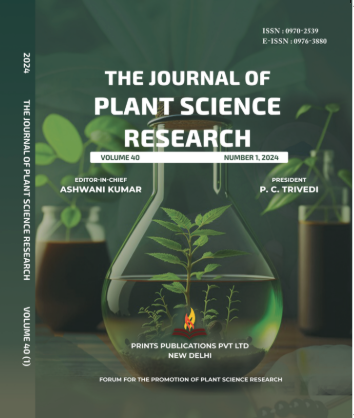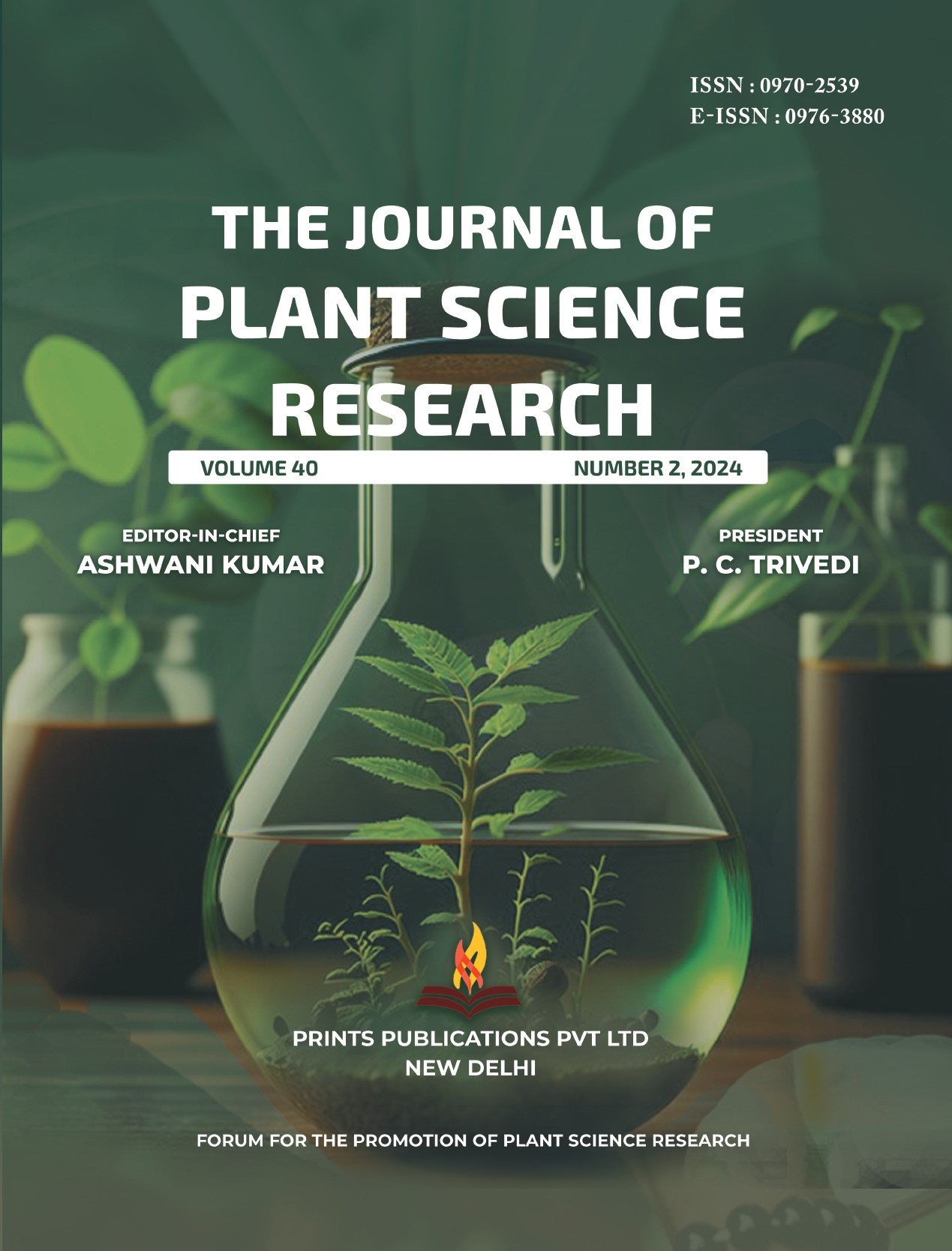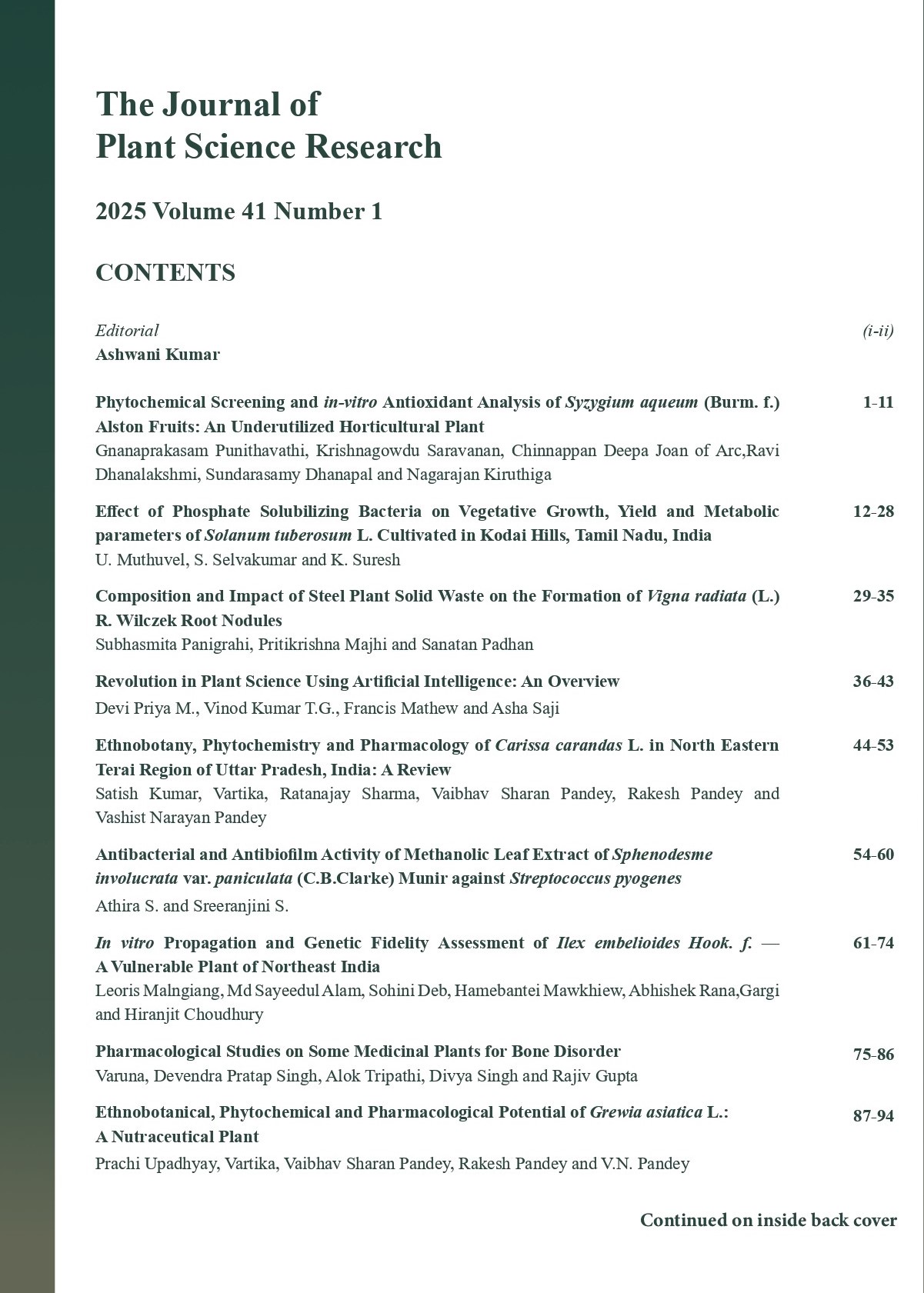The Journal of Plant Science Research - A UGC Care-Listed Journal
Published in Association with Forum For the Promotion of Plant Science Research
Current Volume: 41 (2025 )
ISSN: 0970-2539
e-ISSN: 0976-3880
Periodicity: Tri-annual
Month(s) of Publication: April, August & December
Subject: Botany
DOI: 10.32381/JPSR
Online Access is Free for Life Member
Persuasive and Strategic Approaches for Preliminary Phytochemical Screening, Quantitative Analysis and Antioxidant Activity of Crude Plant Extracts from Clematis napaulensis DC Indigenous to Nagaland, India
By : P M Konyak, Moaakum, Z Hiese, S Lakshmana Prabu, K Ruckmani, V Hiese, T Ajungla, H S Rathore
Page No: 739-751
Abstract
The present study is designed to extract and investigate the bioactive phytoconstituents, their secondary metabolites, and antioxidant potential from the leaf extracts of Clematis napaulensis belonging to the family Ranunculaceae. Extract was investigated for its preliminary phytoconstituents by chemical analysis method. Quantification of total phenolic content by Folin-Ciocalteau assay; Total Flavonoid Content and Total Triterpenoid Content (TTC) were quantified by colorimetric method. Antioxidant potential was evaluated in vitro using Phosphomolybdenum assay, Hydroxyl radical scavenging activity, Reducing power assay, and the DPPH method. The preliminary phytochemical screening results suggested that a wide variety of pharmacologically active phytoconstituents such as phenolic compounds, alkaloids, glycosides, flavonoids, saponins, tannins, triterpenoids, gums, proteins, and reducing sugars were present whereas non-reducing sugar was absent. The total phenolic content in the methanolic extract was 0.8308 ?g/mL of gallic acid equivalent; the total flavonoid content of the plant was 1.3850 ?g/mL of quercetin equivalent and the total triterpenoid content was found to be 1.414 ?g/mL of oleanolic acid equivalent. In vitro antioxidant studies revealed that Clematis napaulensis possess good antioxidant potential. This is the first report of Clematis napaulensis, the phytochemical screening results suggested that the extract would be a potential alternative also it can be explored to discover and development of new chemical moieties for treating various diseases.
Authors :
P M Konyak : Department of Botany, Kohima Science College, Jotsoma, Kohima, Nagaland, India.
Moaakum : Department of Science & Technology- Nagaland Science & Technology Council, Govt. of Nagaland, Kohima, India.
Z Hiese : Department of Science & Technology- Nagaland Science & Technology Council, Govt. of Nagaland, Kohima, India.
S Lakshmana Prabu : Department of Pharmaceutical Technology, University College of Engineering (BIT Campus), Anna University, Tiruchirappalli, India.
K Ruckmani : Department of Botany, Nagaland University, Lumami, India.
V Hiese : Department of Botany, Kohima Science College, Jotsoma, Kohima, Nagaland, India.
T Ajungla : Department of Botany, Nagaland University, Lumami, India.
H S Rathore : Department of Biotechnology, School of Engineering and Technology, Nagaland University, Dimapur, India.
DOI: https://doi.org/10.32381/JPSR.2022.38.02.27






